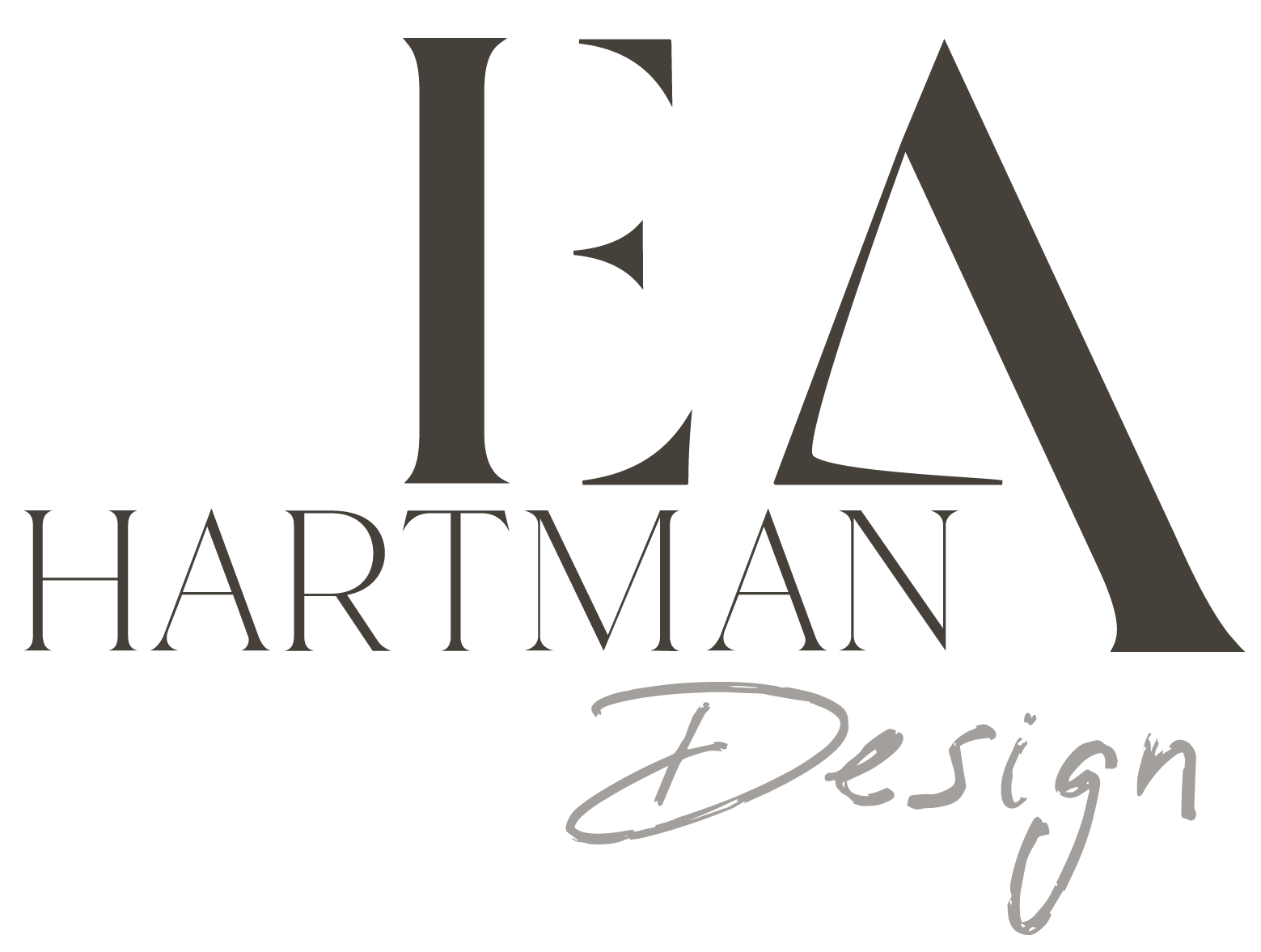This spring, I successfully finished an intense 15-week, 15-credit semester toward my interior design degree. This is the first semester where I really began to assemble and design projects from programming through design development. As a result of this hands-on experience, I began to uncover and hone my unique design point of view. I also gained insight into my personal design approach and interior design processes.
The diverse coursework challenged me both technically and creatively. As a result, I developed some foundational design skills (and a few work samples). Coursework included:
- Space planning for three businesses (a pediatric clinic, a cultural center, and a restaurant)
- An introduction to Revit, including floor plans, reflected ceiling plans, detailed drawings, schedules, and sheet sets
- Kitchen and bath design, including NKBA guidelines, industry trends, concept development, space planning, cabinet layouts, and specifications for a residential client
- Hand rendering and perspectives, which I discovered I enjoy and challenged me creatively
Here are some of the discoveries I made along the way:
Visual Design Point of View
This semester, I experimented with design concepts for both commercial and residential projects. I pushed myself with diverse themes that challenged my knowledge of design history, materiality, and principles, including a Korean-influenced Craftsman home renovation and a restaurant design inspired by a winter walk in the woods.
Concept boards help me to distill myriad options into a focused idea, often connecting unusual dots, in order to weave a cohesive visual narrative. The images reveal colors, textures, shapes, and mood that guide my design decisions and product selections. Concept statements translate that visual narrative into words intended to resonate with the client and sell the overall design vision.
Even with the guidance of a concept board, though, my design process this semester was both time-consuming and redundant, especially when it came to researching and specifying products. Now that the semester is over and I have a few more designs (and specifications) under my belt, I’m reassessing how I approach this process.
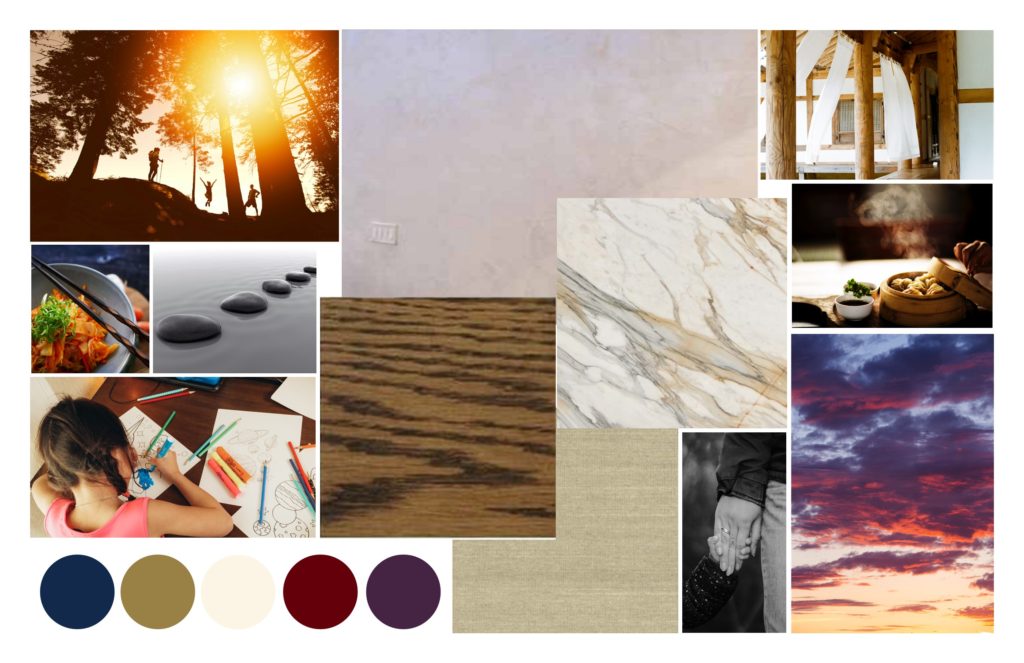
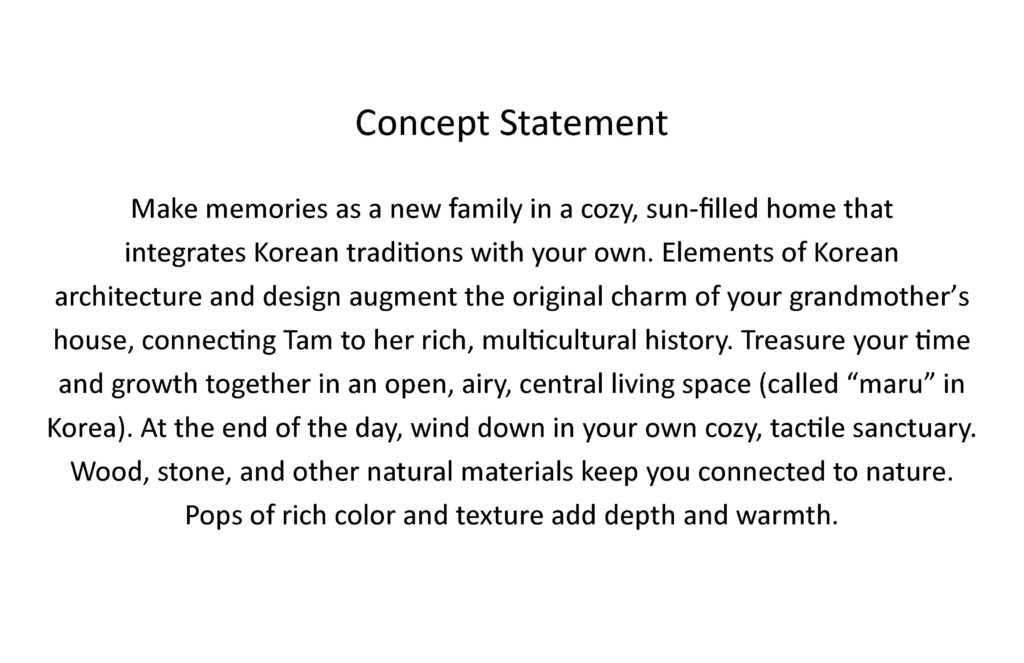
Physical Point of View
I’m inspired by design’s ability to solve problems. A significant opportunity for project-solving in interior design comes from effective space planning. Learning this skill gave me the means to physically manifest my design point of view: What possibilities do I see for the space? How can it function better for the client? How can the layout of the space also aid wayfinding or accentuate architectural features? Solutions emerge when you hit on the right floor plan. That’s an exciting moment!
The space planning coursework re-emphasized for me the importance of process. As a project manager, I’m used to assessing what needs to happen in what order to complete a task. But space planning frustrated me until I started to understand the iterative process (criteria and adjacency matrices, prototypicals, bubble diagrams, block diagrams, and finally floor plans).
My first space planning project was painful, with a lot of duplicated work. The purpose and value of each step was lost on me until I completed them all and tried to put everything together. Because I unintentionally missed details, I had to redesign multiple times. The final plan was good in many ways, but I shoe-horned in a few overlooked requirements. With the second project, I better understood not only the process but what additional steps might complement how I work. The whole design came together more organically.
I have now applied my aspiring space planning skills across multiple projects, both academically and in real life. Completing each step requires more legwork then “winging it.” However, following this process ultimately saves me time, and I’m happier with the end result.

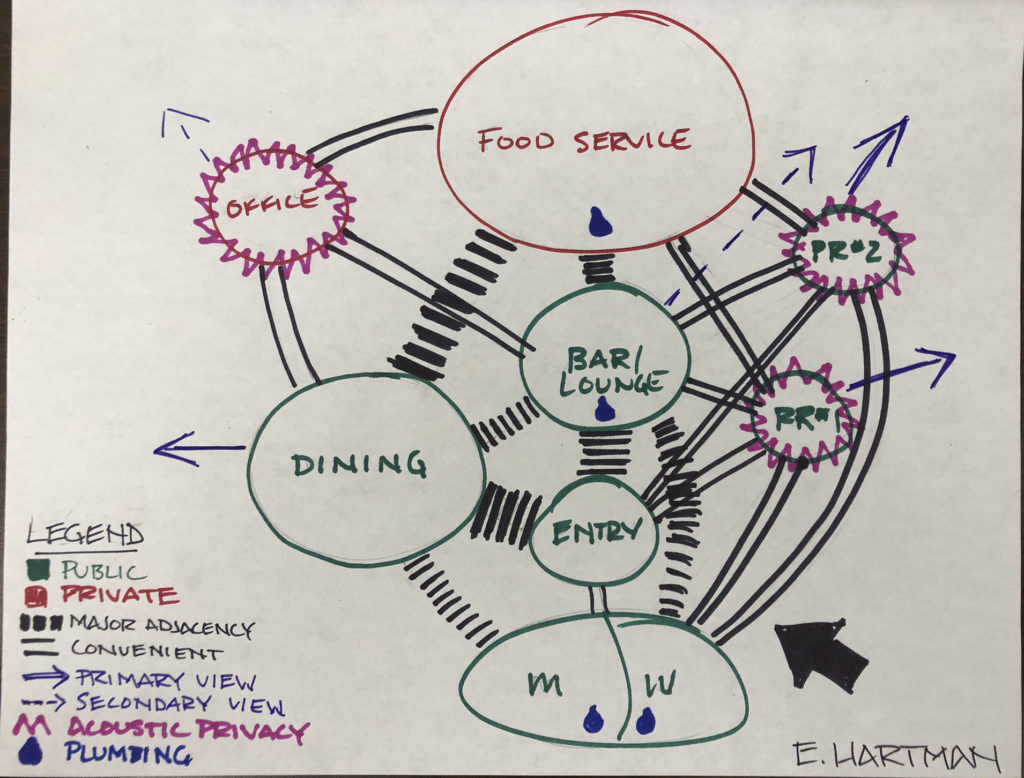


Experiential Point of View
My background in both event planning and user experience influence how I perceive space experientially. Throughout the design process I continually assess how someone will use or navigate whatever I’m building. When designing an event, I run through the space (first mentally, then physically) to test the three-dimensional experience for attendees and ensure the setup works. The value of this practice in interior design became apparent this semester across all of my projects. The better able I am to assess a two dimensional drawing for its 3D potential, the more likely I am to avoid mistakes and changes during execution. It is also part of the narrative for the client. If I can envision and illustrate how users navigate through the space, I see sell that experience to potential clients.
By mentally walking the space, I can estimate the user experience and refine my design proactively. I did this a lot for space planning, especially as I evolved block plans into final floor plans. Once I started to use Revit, I was also able to do this 3D assessment visually through the software. I caught conflicts I wouldn’t have easily noticed in a 2D floor plan. This software functionality altered how I was able to design, and my finished product was better as a result.
Similarly, I found that drawing renderings of my projects revealed areas of the design I had to develop further. By thinking through the design in different views, I improved my attention to detail. I also found rendering very satisfying. It brought otherwise academic designs to life.
The next step for me is learning SketchUp and further developing my Revit skills.
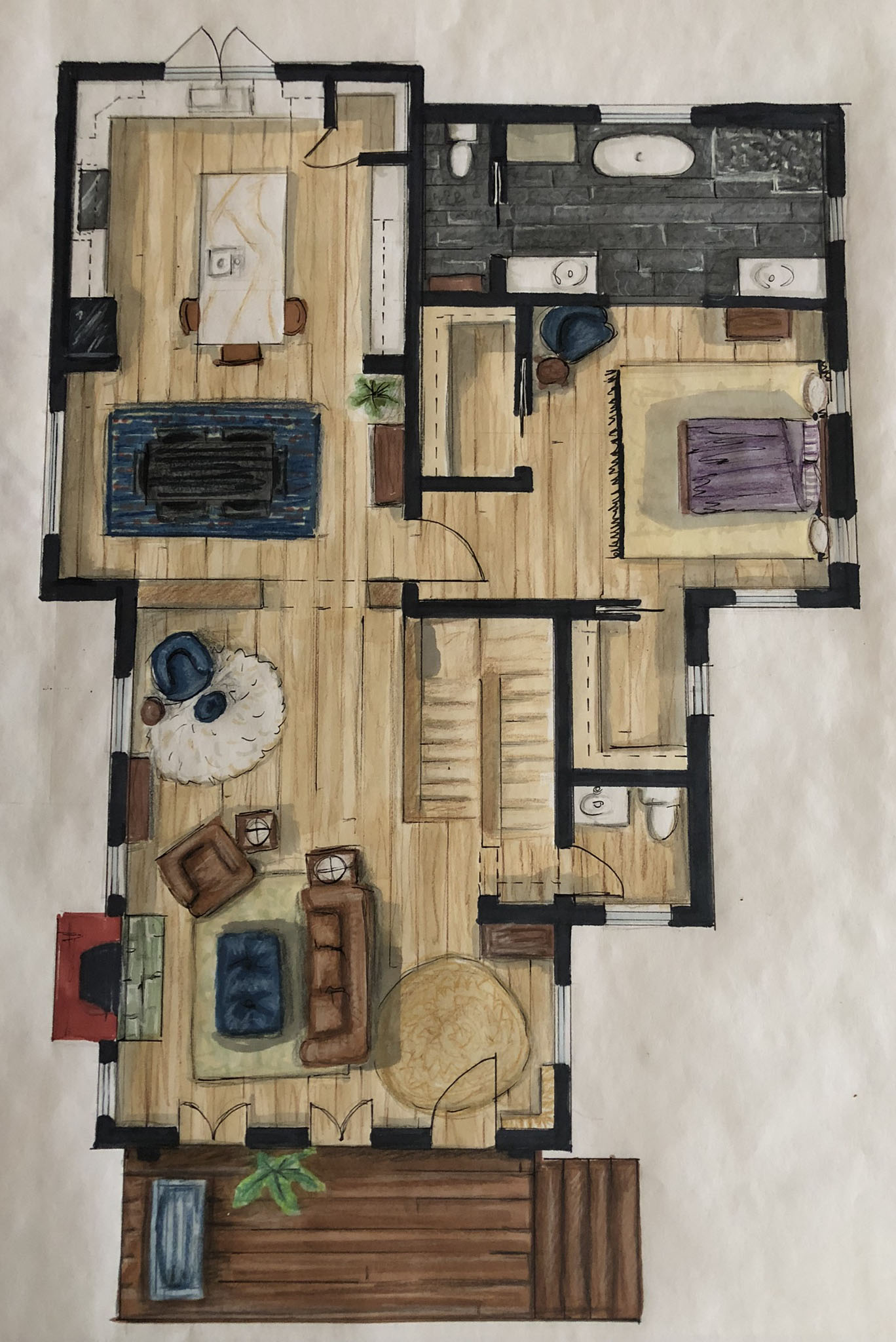
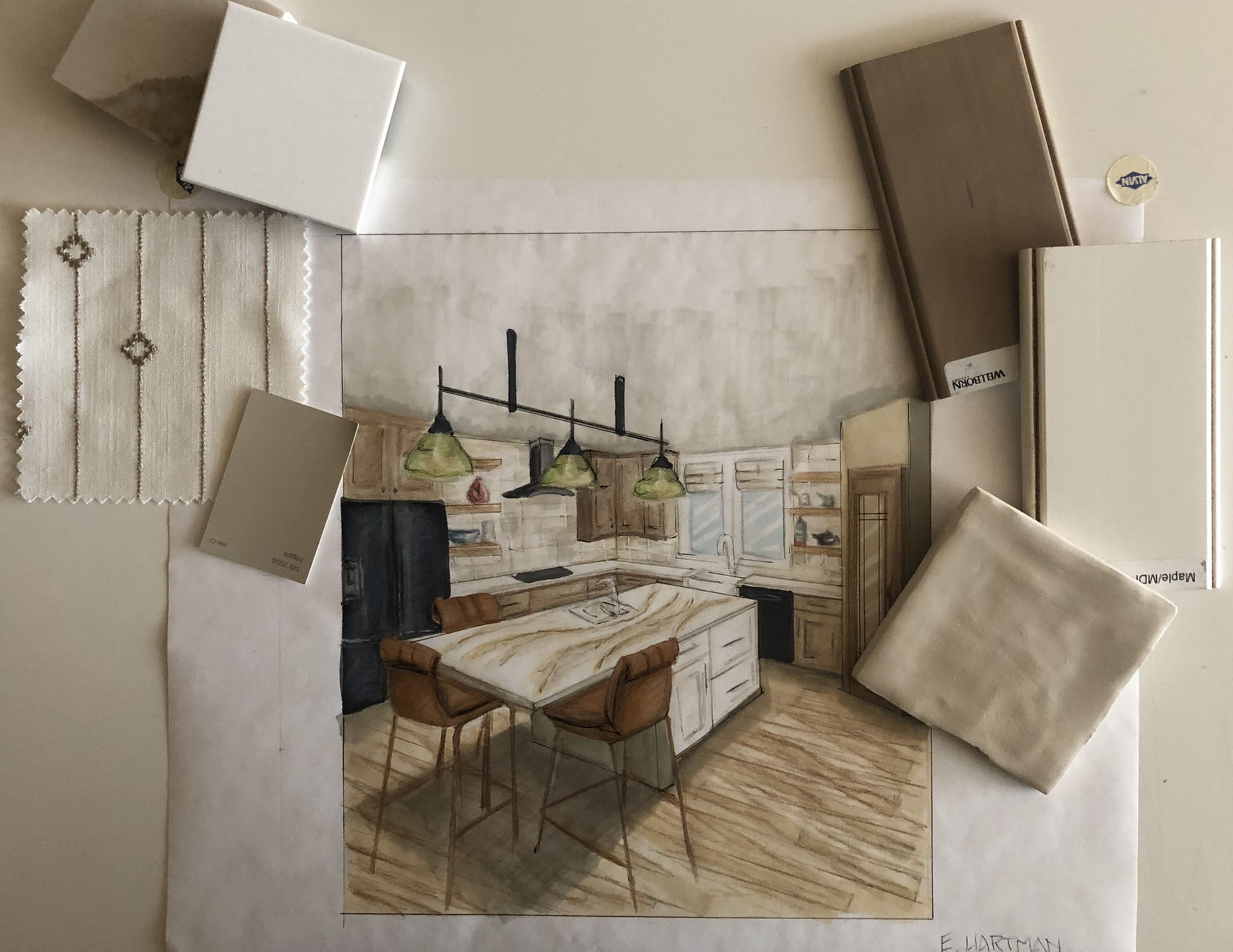


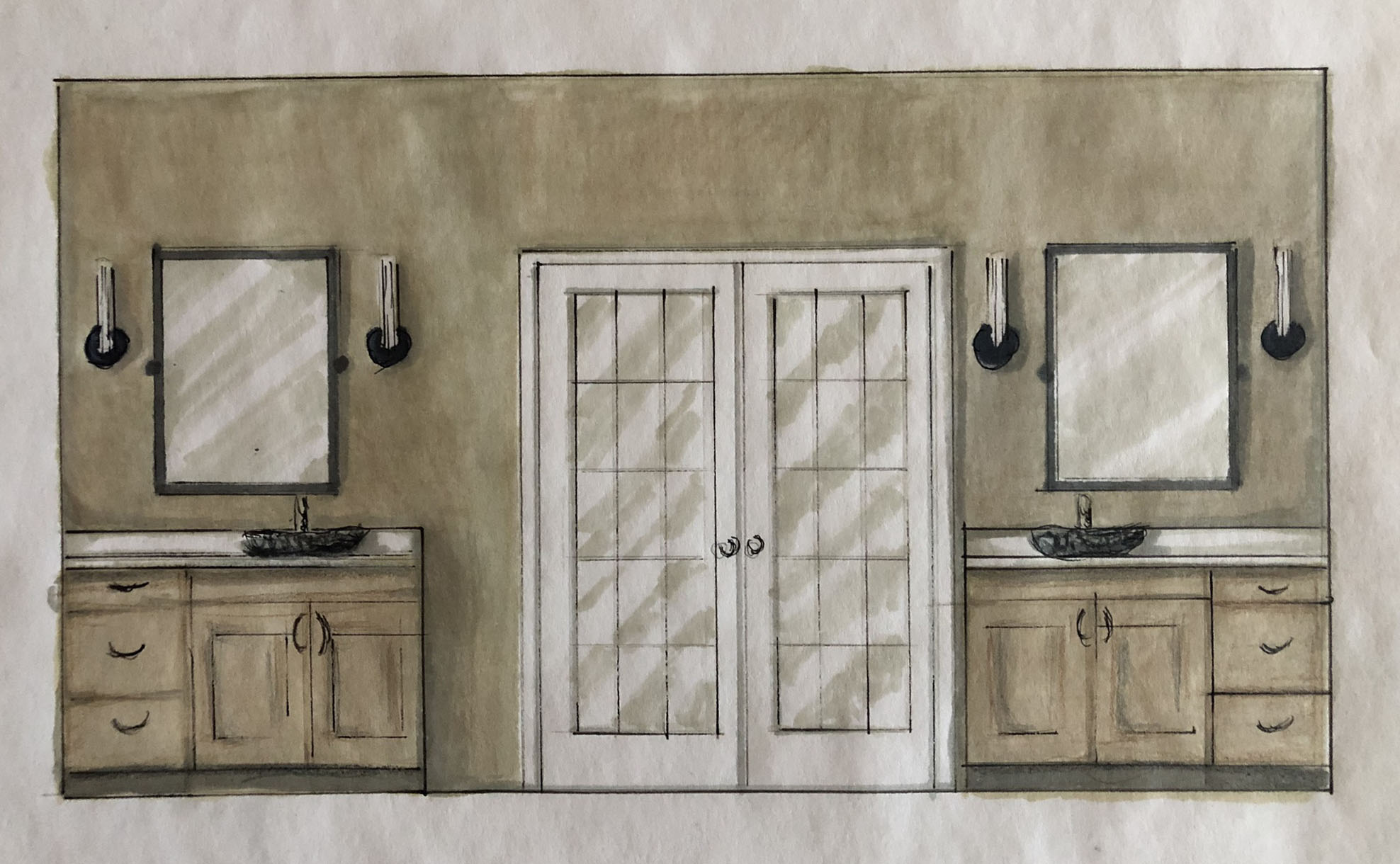
Next Steps
Despite the challenges of the last semester, I was introduced to new tools and skills that immensely enhanced my design. Applying these tools and skills in both academic and real life projects has taught me about my unique design point of view — visually, physically, and experientially.
Next semester I will continue developing these skills through interior construction, finishes, and advanced Revit courses.
